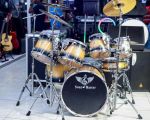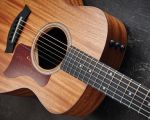What is a Percussion Instrument? Exploring Music's Heartbeat
- 1. What Are Percussion Instruments?
- 2. Types of Percussion Instruments
- 3. The Role of Percussion Instruments in Music
- 4. Famous Percussion Instruments in Popular Music
- 5. How to Choose the Right Percussion Instrument
- 6. Where to Buy Percussion Instruments
1. What Are Percussion Instruments?
Percussion instruments are one of the oldest and most diverse categories of musical instruments, crucial in creating rhythm, beats, and sometimes melody. The defining characteristic of percussion instruments is that they produce sound when struck, shaken, or scraped. The sound can be produced by hitting the instrument with a mallet, hand, or stick, or by creating vibrations through other means like shaking or scraping. But how do they fit into the grand scheme of music? Let’s dive deeper.
2. Types of Percussion Instruments
Percussion instruments can be broadly categorized into two types: indefinite pitch and definite pitch instruments. Let’s explore both categories:
Indefinite Pitch Percussion Instruments
These instruments do not produce a defined pitch, making them excellent for providing rhythm. Examples include:
- Drums – The most well-known percussion instruments. Examples include the bass drum, snare drum, and tom-toms.
- Cymbals – Used for creating crash sounds or accents during music performances.
- Tambourine – A handheld instrument that creates sound when shaken or struck.
Definite Pitch Percussion Instruments
These instruments can produce a particular pitch and are often used to play melodies. Examples include:
- Xylophone – A series of wooden bars struck with mallets to produce a melodic sound.
- Marimba – Similar to the xylophone but with a deeper, warmer tone.
- Timpani – Large kettledrums that can be tuned to specific pitches, often found in orchestras.
3. The Role of Percussion Instruments in Music
The primary role of percussion instruments in music is to provide rhythm and keep time. They form the backbone of most musical compositions, particularly in genres like rock, jazz, and classical music. Percussion instruments are the heartbeat of the ensemble, creating an energetic pulse and helping musicians synchronize. In jazz and orchestral music, percussionists often have complex parts that include both rhythm and melody.
4. Famous Percussion Instruments in Popular Music
Some percussion instruments are so iconic that they define entire genres of music. Consider the drum kit in rock and pop music, or the bongos in Latin music. The congas, often used in Afro-Cuban music, are another well-known example. In classical music, the snare drum and timpani play key roles in dramatic orchestral pieces.
One famous example of percussion in popular culture comes from the iconic Led Zeppelin song "Good Times Bad Times," where John Bonham's powerful drumming is a defining feature of the track’s sound. In jazz, the vibraphone provides a cool, melodic sound that is both rhythmic and tuneful.
5. How to Choose the Right Percussion Instrument
Choosing the right percussion instrument depends on several factors such as the style of music you wish to play, your personal skill level, and your musical goals. If you are just starting, a simple tambourine or bongos might be a great way to get involved with rhythm. For more advanced players, consider instruments like the xylophone or timpani.
6. Where to Buy Percussion Instruments
Whether you are a beginner or an experienced percussionist, finding the right instrument is essential. Many music stores, both online and in physical locations, offer a wide range of percussion instruments. It's always a good idea to check out product reviews and ensure you're getting a quality instrument at a fair price. Some well-known retailers include Guitar Center, Sweetwater, and Musician's Friend. Additionally, consider local music shops for personalized advice and the chance to test the instruments in person.
If you’re serious about percussion, look for specialized stores that focus specifically on percussion instruments. By visiting these stores or exploring their websites, you can ensure that you are investing in the right tools to enhance your musical journey.








